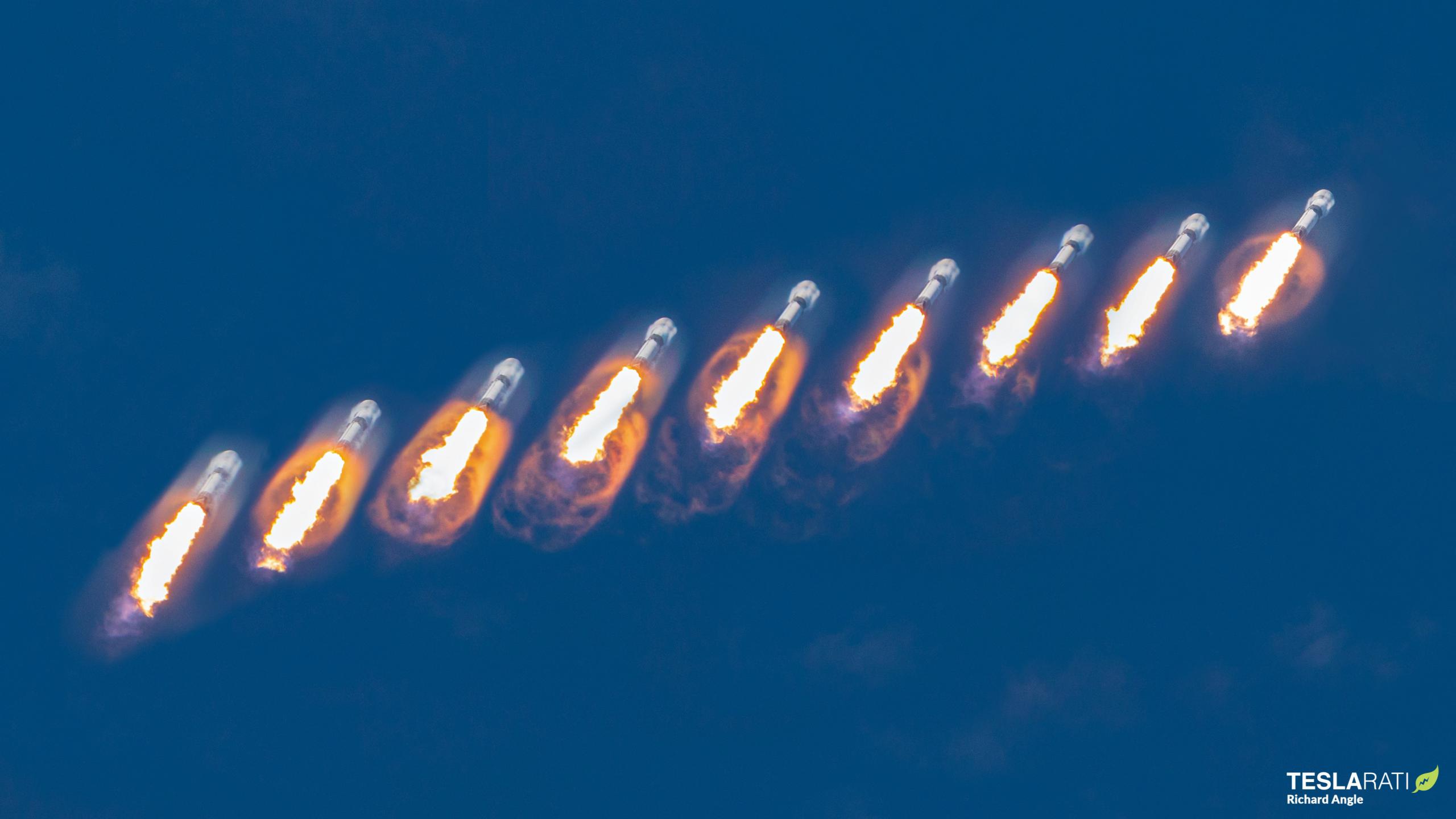
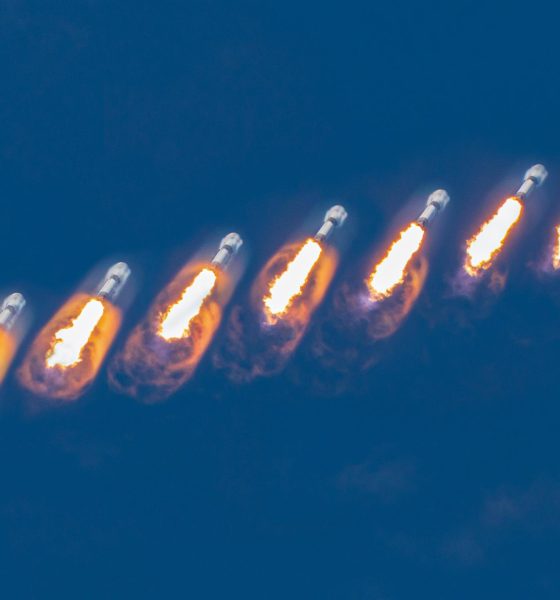
News
SpaceX sets the stage for three Falcon 9 launches in six days
SpaceX has successfully tested a Falcon 9 rocket tasked with launching Italy’s CSG-2 Earth observation satellite as early as 6:11 pm EST (23:11 UTC), Thursday, January 27th.
For any European Space Agency (ESA) member state, launching a spacecraft on a non-European rocket is a rarity. Because the Ariane and Vega rockets that ESA has helped fund and European countries help build are simply no longer capable of consistently competing with SpaceX’s Falcon pricing, Arianespace and ESA have increasingly sought multi-year political mandates that force member states to agree to launch all possible payloads on Ariane, Vega, or Soyuz rockets. Only after Vega suffered multiple launch failures and its Vega C upgrade ran into multiple delays was Italy apparently able to consider launch alternatives for CSG-2 instead of delaying its already-delayed launch by another year or more.
Designed to monitor Earth’s surface towards a variety of ends with a technology known as scanning aperture radar (SAR), the roughly 2200-kilogram (~4900 lb) satellite is headed to a circular polar orbit 620 kilometers (385 mi) above the planet’s surface. Designed to launch on the primarily Italian-built Vega C rocket, which is itself designed to launch up to 2300 kg to low Earth orbit, CSG-2 will instead launch on SpaceX’s much larger Falcon 9.
As of a few years ago, a Falcon 9 launch with a flight-proven booster carried a base price of approximately $50M for at least 12 tons (~27,000 lb) to LEO. According to manufacturer Avio, Vega C is designed to launch 2.3 tons (~5100 lb) to LEO for about $40M. Given that SpaceX recently charged NASA $50M to launch the agency’s IXPE X-ray observatory with a drone ship landing for the mission’s Falcon 9 booster, it’s plausible that Italy is paying SpaceX less than $50M to launch CSG-2, which is light enough and headed to a simple enough orbit to allow its Falcon 9 booster to return to land for recovery.
According to CEO Elon Musk, the complexity of a drone ship landing and at-sea booster recovery adds significant cost (perhaps up to several hundred thousand dollars) to any Falcon launch that requires it. As such, Falcon 9’s return-to-launch-site (RTLS) landing could singlehandedly shave ~$500,000 from CSG-2’s launch price, making it even more cost-competitive with Vega.
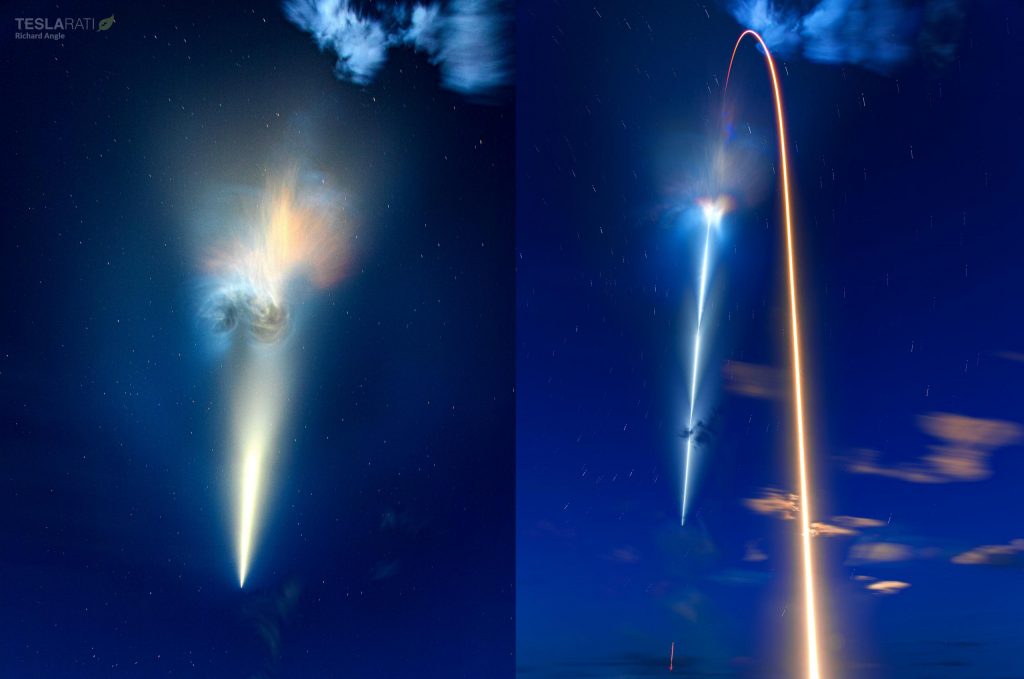
Thanks to the launch window SpaceX and ASI have settled on, CSG-2’s launch could be quite spectacular – and for more than just the crowd-favorite Falcon 9 RTLS landing it will include. Set to lift off just 15 minutes after sunset, the twilight sky (clouds permitting) will be dark blue as Falcon 9 lifts off and climbs into sunlight, backlighting the miles-long exhaust plumes of both stages.
The mission’s RTLS landing will only enhance the effect by adding the interaction of the exhaust plumes of both stages as CSG-2’s Falcon 9 booster flips around and boosts back towards the Florida coast. The sun may even backlight the booster’s exhaust during a reentry burn performed a few minutes after stage separation, hopefully resulting in a spectacular light show that lasts several minutes and is visible for hundreds of miles in any direction.
CSG-2 is the first of three SpaceX launches scheduled in six days. The company aims to launch CSG-2 at 6:11 pm EST on January 27th, Starlink 4-7 around 6:15 pm EST on January 29th, and NROL-87 as early as the morning of February 2nd. If all three avoid delays, NROL-87 will be SpaceX’s sixth launch in 27 days, making it the second time SpaceX has launched three times in one week and six times in four weeks.

Elon Musk
Elon Musk: Tesla Model Y is world’s best-selling car for 3rd year in a row
The Model Y has now established an impressive streak that would otherwise have been impossible before Tesla.

Elon Musk has announced that the Tesla Model Y has become the world’s best-selling car by volume for the third consecutive year, capping 2025 with another dominant performance.
The Model Y has now established an impressive streak that would otherwise have been impossible before Tesla.
Three years in a row
Musk posted on X: “Tesla Model Y is now officially the world’s best-selling car for the third year in a row!” The CEO’s comment echoed an update that Tesla included in its 2025 recap, which highlighted, among other things, the Model Y’s incredible streak.
The Model Y has held the title since 2023, outperforming traditional leaders like the Toyota RAV4 and Corolla thanks to its bang-for-the-buck nature and its stellar combination of practicality, performance, and tech. The Model Y is also lauded as one of the safest vehicles on the road, making it an ideal choice for families in key markets such as China.
An impressive 2025
The Model Y’s sales feat in 2025 is especially impressive considering the introduction of the vehicle’s new variant. Tesla’s changeover to the new Model Y across its global factories resulted in sales being paused for some time in the first quarter. As per Tesla’s Q1 2025 vehicle delivery and production report, “the changeover of Model Y lines across all four of our factories led to the loss of several weeks of production in Q1.”
This suggests that the Model Y’s sales remained strong in 2025 to the point where it could still claim the title of the world’s best-selling vehicle by volume, even with its sales being throttled during the first quarter of the year. It would then be interesting to see just how far the Model Y can go in 2026, especially considering the rollout of new variants like the six-seat extended wheelbase Model Y L, the affordable Model Y Standard, and the top-tier Model Y Performance.
News
Tesla shares epic 2025 recap video, confirms start of Cybercab production
The cinematic montage, posted by the official Tesla account on X, celebrated the company’s progress in EVs, energy, and Robotaxi development.
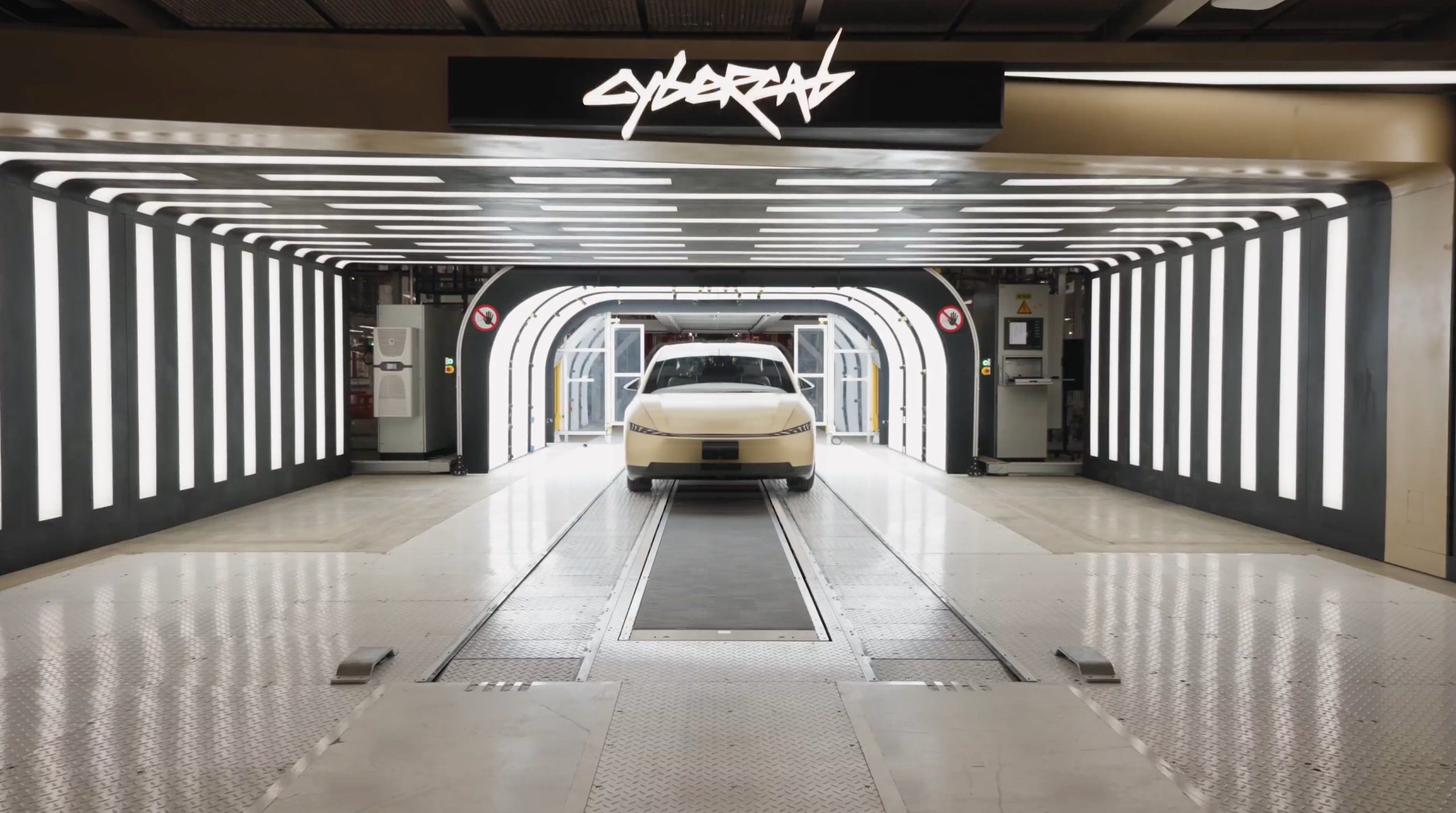
Tesla has released an epic year-in-review video for 2025, recapping some of its major achievements from refreshed models to autonomy breakthroughs and production ramps.
The cinematic montage, posted by the official Tesla account on X, celebrated the company’s progress in EVs, energy, and Robotaxi development while looking ahead to an even bigger 2026.
Tesla’s 2025 highlights recap
Tesla has had a busy 2025, as highlighted in the recap video. The video opened with Elon Musk explaining the company’s pursuit of sustainable abundance. A number of milestones were then highlighted, such as the rollout of FSD v14, Optimus’ numerous demos, the opening of the Tesla Diner in Hollywood, LA, the completion of the world’s first autonomous car delivery, and the launch of the Robotaxi network in Austin and the San Francisco Bay Area.
Tesla also highlighted several of its accomplishments over the year. As per the company, the Model Y was the year’s best-selling vehicle globally again, and Teslas became more affordable than ever thanks to the Model 3 and Model Y Standard. Other key models were also rolled out, such as the refreshed Model S and X, as well as the new Model Y, the new Model Y Performance, and the six-seat, extended wheelbase Model Y L.
The Megablock was also unveiled during the year, and the Supercharger Network grew by 18%. Over 1 million Powerwalls were also installed during the year, and the Cybertruck became the first EV truck to get both an IIHS Top Safety Pick+ award and an NHTSA 5-Star safety rating.
Cybercab production confirmed
Interestingly enough, Tesla also confirmed in its 2025 recap video that the production of the Cybercab has started. This bodes well for the vehicle, as it could result in the vehicle really being mass-produced in the first half of 2026. Elon Musk confirmed during the 2025 Annual Shareholder Meeting that Cybercab production should earnestly start around April 2026.
Musk has also noted that the Cybercab will be Tesla’s highest-volume vehicle yet, with the company aiming for an annual production rate of about 2 million units. “If you’ve seen the design of the Cybercab line, it doesn’t look like a normal car manufacturing line,” Musk said earlier this year. “It looks like a really high-speed consumer electronics line. In fact, the line will move so fast that actually people can’t even get close to it.”
News
Tesla Cybercab is changing the look of Austin’s roads, and it’s not even in production yet
Videos and photos showed the sleek, two-seat autonomous vehicles navigating traffic.
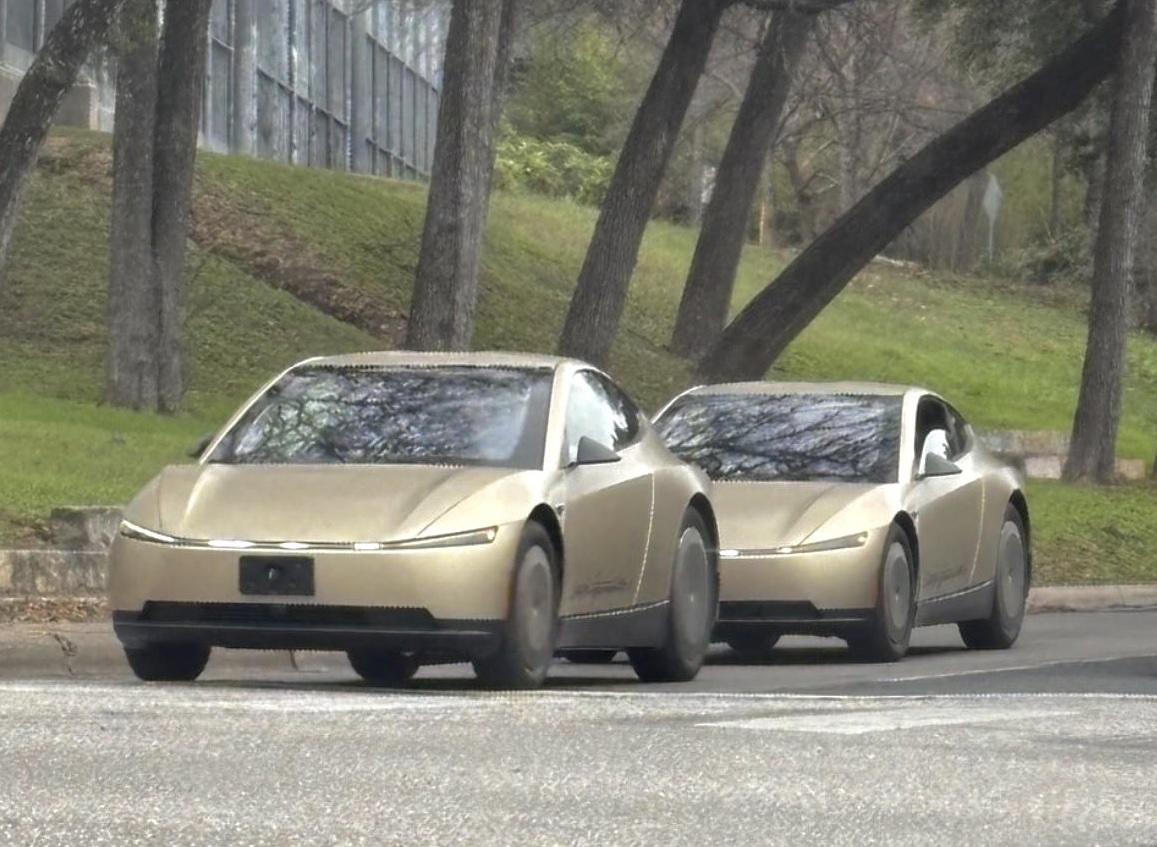
Even before entering production, Tesla’s Cybercab is already transforming the appearance of Austin’s streets, with multiple prototypes spotted testing in downtown areas recently.
Videos and photos showed the sleek, two-seat autonomous vehicles navigating traffic. Interestingly enough, the vehicles were equipped with temporary steering wheels and human safety drivers.
Recent Cybercab sightings
Over the weekend, enthusiasts captured footage of two Cybercabs driving together in central Austin, their futuristic silhouettes standing out amid regular traffic. While the vehicles featured temporary steering wheels and side mirrors for now, they retained their futuristic, production-intent exterior design.
Industry watcher Sawyer Merritt shared one of the vehicles’ videos, noting the increasing frequency of the autonomous two-seater’s sightings.
Previewing the autonomous future
Sightings of the Cybercab have been ramping in several key areas across the United States in recent weeks. Sightings include units at Apple’s Visitor Center in California, the Fremont factory test track, and in Austin’s streets.
The increased activity suggests that Tesla is in overdrive, validating the autonomous two-seater ahead of its planned volume production. Elon Musk confirmed at the 2025 Shareholder Meeting that manufacturing begins around April 2026 with ambitious targets, and during an All-Hands meeting earlier this year, Musk hinted that ultimately, Tesla’s factories should be able to produce one Cybercab every 10 seconds.







